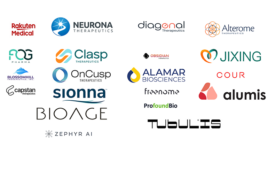Last week, Xencor noted there was a “positive trend” on the primary endpoint in the company’s experimental systemic lupus erythematosus (SLE) drug XmAb5871; however, the drug ultimately failed to achieve the primary endpoint of a Phase II study. XmAb5871 did not significantly increase the proportion of SLE patients who maintained improvement, compared with placebo.
Study author Joan Merrill commented, “these encouraging results support further study of XmAb5871 in SLE.”
The Phase 2 study of XmAb5871 enrolled 104 patients with moderate to severe, non-organ threatening SLE. Patients discontinued background immunosuppressive medication and received a short course of intramuscular steroids to quiet SLE disease activity.
The primary endpoint of the study was the proportion of patients with no loss of improvement (LOI) (i.e., maintenance of improvement) in the efficacy-evaluable population, defined as those who completed Day 225, had LOI, or discontinued due to a drug-related adverse event. LOI was defined as a SLEDAI increase ≥4 points or a new BILAG A or B score and physician intent to treat with rescue medication.
At Day 225, improvement was maintained by 42 percent of patients (21/50) in the XmAb5871-treated arm, compared to 28.6 percent of patients (12/42) in the placebo-treated arm (p = 0.18). The company explained that because the efficacy-evaluable population excludes 10 of the 52 placebo patients and 2 of the 52 XmAb5871-treated patients who withdrew from the study, these exclusions led to higher placebo response rates compared to the intent-to-treat (ITT) population. In the ITT population, improvement was maintained by 40.4 percent of patients (21/52) in the XmAb5871-treated arm, compared to 23.1 percent of patients (12/52) in the placebo-treated arm.
Secondary endpoints included evaluations of time to LOI and safety and tolerability of XmAb5871. Patients in the efficacy-evaluable population treated with XmAb5871 experienced a statistically significant longer time to LOI (median = 230 days, hazard ratio = 0.53, p = 0.025), compared to placebo-treated patients (median = 131 days), a 76 percent improvement in median time to LOI and a 47 percent reduction in risk of LOI.
“Xencor completed this study to efficiently assess the potential of XmAb5871 in SLE, now the third indication where a promising treatment effect has been seen, after rheumatoid arthritis and IgG4-Related Disease,” said Bassil Dahiyat, Ph.D., president and chief executive officer at Xencor. “By year end, we plan to initiate a Phase 3 study of XmAb5871 in IgG4-RD, and we are exploring further development in SLE in the context of partnering. With six internal programs in autoimmune disease and cancer advancing in the clinic, we anticipate additional data readouts over the next two years.”
XmAb5871 is a first-in-class monoclonal antibody that targets CD19 with its variable domain and uses Xencor’s XmAb immune inhibitor Fc domain to target FcγRIIb, a receptor that inhibits B-cell function. XmAb5871 is the first drug candidate that Xencor is aware of that targets FcγRIIb inhibition.
(Source: Xencor)
Filed Under: Drug Discovery and Development



